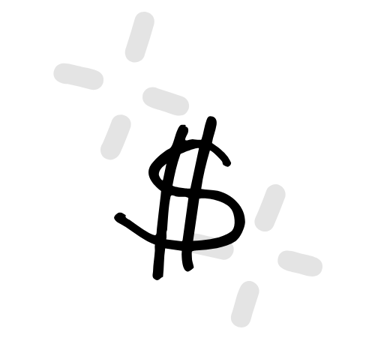What is a Salary Allocation Calculator?
A Product Pricing Calculator is a tool that helps businesses figure out the right selling price for their products.
By entering your fixed costs, variable costs, expected sales volume, and desired profit margin, the calculator shows your unit cost, breakeven price, and recommended selling price.
This makes it easier for entrepreneurs and small business owners to set prices that cover expenses, stay competitive, and ensure profitability.
Salary Allocation Calculator – Split Your Salary for Personal & Business Use
Wondering how to manage your salary effectively? Our Salary Allocation Calculator helps you divide your income into essentials (needs), lifestyle expenses (wants), personal savings, and business funds. Whether you’re planning for personal budgeting or business growth, this free tool gives a clear snapshot of how to allocate your money efficiently.
How to Use the Salary Allocation Calculator (Step-by-Step)
Enter your monthly salary and select the pay frequency (monthly, weekly, or annually).
Choose a preset allocation rule like 50/30/20 or create your custom split.
Adjust percentages for Needs, Wants, Savings, and Business if desired (they must total 100%).
Click Calculate to view the allocation preview with amounts and progress bars.
The result will indicate:
- Needs: Essentials like bills, rent, groceries.
- Wants: Lifestyle, subscriptions, entertainment.
- Savings: Emergency fund or personal savings.
- Business: Set-aside for investing in or operating a business.


Why Use an Salary Allocation Calculator?
Dividing your salary helps you control spending, save effectively, and allocate funds for business growth. It ensures you cover essentials, enjoy lifestyle choices responsibly, and maintain a clear plan for future savings or business investments.
The Salary Allocation Calculator is especially helpful when:
You want a clear, structured way to divide your income into essentials, lifestyle, savings, and business funds
You’re struggling with overspending and want to gain control over your budget
You’re running a side hustle or business and need to set aside consistent funds for growth
You want to follow a proven system like 50/30/20 but also add a business category
You receive irregular income (freelance, commission, contract work) and need to standardize allocations
What is a Good Price vs. a Bad Price?
A “good” allocation isn’t about spending less—it’s about balance. The right split ensures you cover essentials, enjoy your lifestyle, save for emergencies, and consistently fund business growth.
✅ Good Allocation:
Covers essentials (rent, groceries, bills) without overextending
Reserves 10–20% or more for savings and emergencies
Sets aside business funds for reinvestment or operating cash
Leaves room for wants, so budgeting feels sustainable
⚠️ Bad Allocation:
Spending too much on wants, leaving little for savings or business
Allocating 0% to savings, which increases financial vulnerability
Ignoring business investment, making growth harder
Overloading “needs” with lifestyle items that should really be “wants”
👉 Allocation should be evaluated in context — if your income is lower, your “wants” may need to shrink temporarily so that essentials and savings are covered.
Salary Allocation is calculated using the formula:
For each category (Needs, Wants, Savings, Business):
Adjusted automatically if total % does not equal 100.
👉 Salary is normalized to monthly equivalent if input as weekly or annual.
Use Case: Small Business – Cafe Expansion
Imagine you earn $4,000 per month. You want to allocate 50% for needs, 20% for wants, 20% for savings, and 10% for your business. The calculator instantly shows:
Needs: $2,000
Wants: $800
Savings: $800
Business: $400
👉 This helps you clearly see how much you can reinvest in your business while maintaining your lifestyle and savings.
Tips for Better Salary Allocation
Automate your splits
Set up automatic transfers to savings and business accounts right after payday.
Revisit percentages
Adjust allocations when your salary changes or new priorities arise.
Separate business funds
Keep a dedicated account so you don’t mix personal and business spending.
Start small, grow later
Even setting aside 5% for business is better than 0%—consistency matters more than size.
Common Challenges in Salary Allocation
While the calculator simplifies budgeting, users may still face some difficulties:
1. Unrealistic Percentages
Setting 40% savings or 30% business without considering actual needs may lead to stress and overspending.
Tip: Start with realistic percentages and gradually increase savings or business contributions.
2. Inconsistent Income
Freelancers or commission-based earners may find it hard to stick to fixed percentages when income fluctuates.
Tip: Base allocations on your average monthly income instead of peak months.
3. Misclassifying Expenses
People often put “lifestyle wants” (like dining out) under “needs,” which distorts allocations.
Tip: Be strict—needs are true essentials like rent, utilities, groceries, and healthcare.
4. Neglecting Business Funds
It’s tempting to spend everything on personal needs and wants, leaving nothing for business growth.
Tip: Even a small percentage toward business builds momentum and discipline.
In short:
Salary Allocation Calculator is a simple yet powerful tool to manage your money efficiently. By splitting your salary into needs, wants, savings, and business funds, you can maintain financial balance while growing your personal and business goals.
View our blogs Below






Business Calculator
View Our handy business calculators! While we make more...

Contacts
stackari.contact@gmail.com
